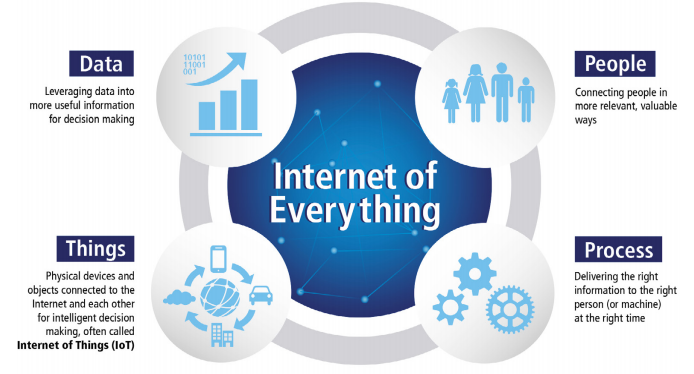DHL and Cisco, last week, published a joint report claiming that the burgeoning Internet of Things (IoT) will lead to a $1.9tn boost to their respective industries.
Both companies are currently working together on a new IoT-driven operation for supply chains and warehouse operations. The companies believe such a new innovation would be a hefty boon to their businesses, according to the report.

DHL, part of the Deutsche Post DHL Group, and Cisco Consulting Services make the case of embedded sensors in warehouses, stock inventory, and delivery vehicles that create a constantly monitored system, which would, in theory, improve efficiency across the board.
The report was launched at the DHL Global Technology Conference in Dubai, UAE.
The number of connected devices globally is growing, anticipated to reach 50 billion by 2020, but remains surprisingly limited, says Ken Allen, CEO of DHL Express and Board Sponsor Technology, citing figures in their report. “There is huge potential for countries to further increase their connectedness and prosper through trade, integration and technology,” says Allen. “We believe the Internet of Things will be a primary enabler of this global transformation.”
Cisco’s economic analysis claims that the Internet of Things will generate $8tn worldwide over the next ten years. This includes the $1.9tn figure on supply chains and logistics mentioned above. Other areas include revenue, enhanced customer experience, and improving employee productivity with the Internet of Things.
Internet of Things sensors and automated technologies could be used in every step of the shipping and deliveries industries from tracking stored and moved shipments to smarter inventory management in warehouses.
Meanwhile in transportation, businesses could track the movement of goods and schedule maintenance more efficiently for faster deliveries for the customer, says the report. “This report clearly demonstrates that digitization and the IoT will deliver long term efficiencies and growth opportunities across a wide range of industries,” said Ciscos’ EMEAR president, Chris Dedicoat.
It won’t be easy by the looks of things though. Industries will need to fully understand every aspect of the value chain and how it can be improved for the most efficient results.
 Furthermore, businesses will need to be open to investing in the Internet of Things for the future and for long term business, according to vice president of innovation and trend research at DHL Customer Solutions & Innovation, Markus Kückelhaus (Seen in image).
Furthermore, businesses will need to be open to investing in the Internet of Things for the future and for long term business, according to vice president of innovation and trend research at DHL Customer Solutions & Innovation, Markus Kückelhaus (Seen in image).
“To get the maximum global economic benefit, we’ll need to understand how all components in the value chain converge and this will require a comprehensive collaboration, participation and the willingness to invest to create a thriving IoT eco system for sustainable business processes. The new Trend Report is another step towards making sure DHL delivers the benefits of IoT to our customers” said Kückelhaus, DHL and Cisco’s report breaks the use of Internet of Things technology into two distinct parts – sense and sense making. Sense refers to the monitoring and tracking of assets while sense making is the separate field of wrapping your head around the massive amounts of data that will be produced.
The time is right to leverage this data, say the report’s authors, with the technology existing to make sense of the data. “Today, we see optimal conditions for IoT to take off in the industry,” they write. “There is a clear technology push through the rise of mobile computing, consumerization of IT, 5G networks, and big data analytics, as well as a pull from customers who are increasingly demanding IoT-based solutions. Combined, these factors are enabling logistics providers to adopt IoT at an accelerating rate.”
The report goes on to state some practical examples of IoT technology in action in a number of different industries, namely Hamburg’s Port Authority in Germany. As Europe’s second busiest port, it deals with an immense number of shipments in and out every day.
Its IT system was expanded as part of its upgrade and over 300 sensors were placed around the port to monitor to and from traffic as well as check the integrity of bridges for any necessary maintenance. Meanwhile drivers can avail of mobile apps with details on the port like accessibility and parking.
Adopting a similarly proactive approach to Internet of Things technology in the supply chain and logistics could yield impressive results. This is the crux of DHL and Cisco’s report.
Similar reports and predictions have been made for the use of the IoT in other industries, such as manufacturing, and the IoT benefits to logistics have been tabled before in the past.
By Jonathan Keane





